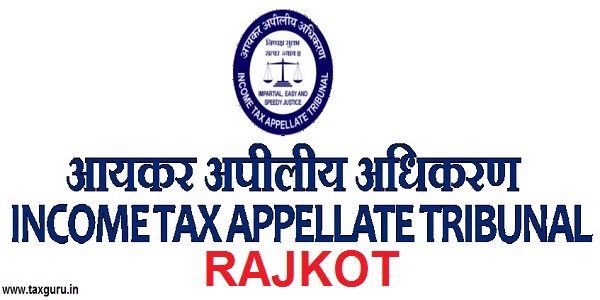1. What is GST?
Ans. Simply put GST stands for Goods and Services Tax, which is levied on supply of goods or services or both. Sale of goods, for example is a type of supply. Various economic activities are all different types of supply.
2. On what type of transactions is GST levied?
Ans. In general, GST is levied on all supplies of goods or services or both which are made for consideration. In most cases consideration is the payment for sale of manufactured or traded goods.
3. Will GST be levied on all goods or services or both?
Ans. No. GST will not be levied on alcohol for human consumption. It will also not be levied for the time being on 5 petroleum products (Crude, Motor Spirit (Petrol), HSD, Aviation fuel & Natural gas),on electricity and on sale and purchase of real estate.
4. How GST will be levied on different kinds of supply of Goods or Services or both?
1. Ans. GST is a dual levy. On every supply within a state (intra-State), GST paid will have two components -Central Tax and State Tax. On every supply across states (inter-State), Integrated Tax will be levied. However, sum total of Central and State tax will be equal to Integrated Tax. Thus, whether a supply is made in same State or to another State, total tax required to be paid shall be the same.
5. Whether a person will have to approach two authorities-Centre as well as State for various permissions, audit etc?
Ans. No, a person will have to approach only one tax authority. The officers of Centre will be cross empowered to do the work of State officers and vice versa. Each tax payer would be assigned one authority, either Centre or State.
6. What is destination based consumption tax?
Ans. GST will accrue to the State where the supply is consumed. For example, if a car is manufactured in Chennai but purchased by a consumer in Mumbai, the state component of tax would accrue to Maharashtra although tax would be paid by the supplier in Tamil Nadu.
7. Who will pay GST?
Ans. GST, in general, will be paid by the supplier. He will collect the same from the recipient of supply (buyer). However, in few cases, the recipient, would be liable to pay GST to the Government on reverse charge basis.
8. How will GST be collected?
Ans. GST follows multi-stage collection mechanism. GST shall be collected at every stage in the supply chain. However, any tax paid at previous stage is available as set-off. In a nutshell, only value addition will be taxed at every stage. For instance, B purchases goods from A for Rs. 100/-. Let’s say tax rate is 10%. A will pay tax of 10% and will collect Rs. 110/- from B. Suppose B further sells the goods for Rs. 105/-. He will have to pay Rs. 10.50 as tax. He will the tax by using the credit of Rs. 10/- already paid by him to A. So in effect, he will be paying Rs. 0.50 only on the value add of Rs. 5/- made by him.
9. What in Input Tax Credit?
Ans. A person doing business will be purchasing goods/availing services for making further supplies in the course or furtherance of business. When such purchases are made by him, tax would have been charged by his supplier and collected from him. Since tax is collected from him, he can avail credit of the tax paid by him to his supplier. This is known as input tax credit for the recipient.
10. What tax will be levied on inter-State supplies?
Ans. Inter-state supplies shall be subject to integrated tax leviable under the IGST Act. However, total rate of tax shall be same whether a supply is made within the State or outside the State.
11. Is GST going to increase compliance burden on the trade?
Ans. No. On the contrary it will result in streamlining and reduction of compliance burden under indirect tax regime. Acts and Rules are uniform across the country. There will be minimal interface of taxpayer with the tax authority. Simplified and automated procedures for various processes such as registration, returns, refunds, tax payments,etc. have been prescribed. Since multiple record keeping for a variety of taxes is not required, there will be lesser investment of resources and manpower in maintaining records. The tax payer will no longer have to go to multiple authorities to report compliances. In the long run, due to automated procedures, compliance burden is going to reduce under GST. It will give a great boost to improving ease of doing business.






















There should be more education on GST, otherwise the public will be misguided and create a false impression about DFT. Please wakeup T N PILLAI CHENNAI
HELLO EXPERT!!
KINDLY HELP ME RESOLVE MY QUERY..
FATE OF ST ON CASH BASIS OF ACCOUNTING (UPTO 50L T.O.)??
EG. XYZ IS A SERVICE PROVIDER AND HAS TURNOVER BELOW 50LACS HENCE FOLLOWS CASH BASIS UNDER ST..
THEY RAISE INVOICES AND REMITS THE ST ON THE BASIS OF RECEIPTS..
ASSUME THEY HAD BILLED FOR 20LACS UPTO 30/06/2017 AND RECEIVED UPTO 7.5LACS,
WHAT WOULD BE THE FATE OF THE REMAINING 12.5LAC???
THE SAME HAS BEEN BILLED AS PER ST RULES BUT WOULD BE RECEIVED AFTER ST IS SUBSUMED UNDER GST I.E., AFTER 1ST JULY…
PLEASE NOTE GST DOES NOT HAS ANY CONCEPT OF CASH BASIS OF ACCOUNTING SO WHAT WOULD BE THE FATE OF THE INVOICES RAISED UPTO 30/06/2017/??
WHERE ARE THESE FUNDS RECEIVED FROM 1ST JULY TO BE DECLARED??
WHERE WILL BE THE ST REMITTED TO GOVT FOR THE FUNDS RECEIVED AFTER 30/06/2017??
THANKS IN ANTICIPATION!!!!